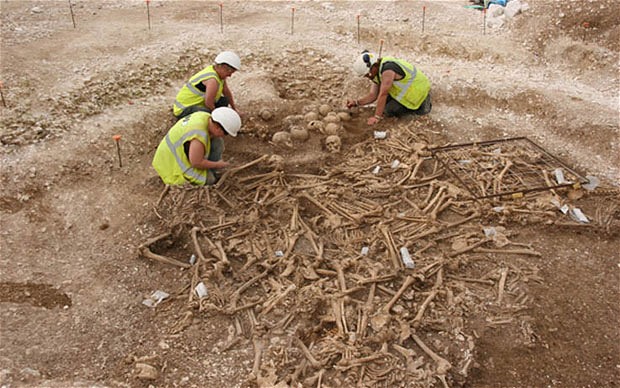Forensics 101: Mass Grave Methodology
/The first hurdle to overcome in mass grave investigations is determining the location of the grave. As we discussed last week, mass graves are deliberately hidden to avoid detection, so simply finding the grave is the crucial first step. To further complicate the process, there are often one or more satellite sites associated with mass graves:
- the execution site (either a surface execution site or a site within the grave itself)
- temporary surface deposition sites used during the transfer of remains from primary to secondary and tertiary sites.
But once the final grave is discovered, how do investigators proceed with an excavation that has to unearth and account for all the evidence in the grave without losing any important information?
There are two main methods used to excavate a mass grave:
Pedestal method:
- The soil around the body mass is removed to just below the lower boundary of the grave, allowing complete viewing from all angles and access to all bodies along the outer margins and top of the grave.
- The original grave walls and ramp are destroyed, but investigators do not have to stand on bodies during the excavation process since workers start at the outer boundaries and work inward.
- This formation allows for water drainage from the site and more complete in situ photography while bodies are still in place.
- The main disadvantage to this method is the loss of stability conferred by the earth surrounding the grave. If the central mass erodes, bodies and body parts can become displaced.
Stratigraphic method:

- The grave is treated as a single site: bodies and artifacts are excavated from top to bottom, removing evidence in reverse order to which it was deposited into the grave.
- Grave walls and ramps are retained, leading to a better understanding of how the grave was constructed. Tool marks and tire tracks may also be recovered.
- Due to the even lowering of the surface grave, rainwater can pool within the confines of the grave, damaging exposed remains or eroding the body mass, but tents or shelters can be constructed over the grave to protect it during inclement weather.
- Only bodies on the top of the mass can be accessed or viewed.
- The bodies must be walked on by the investigators during the course of the excavation.
So which method is better?
- Bones are separated from the body during both methods, although larger bones tends to be dissociated in the pedestal method and smaller bones in the stratigraphic method. Thus the stratigraphic method results in more complete body recoveries.
- Decomposition tends to progress faster in bodies on the outer edges of the grave. The pedestal method exposes those bodies, leading to erosion of the mass and possible mixing of the remains.
- Secondary or tertiary graves tend to contain more skeletonized remains and increased dissociation. Use of the pedestal method seems to accelerate slumping of the grave mass.
As a result, current scientific opinion is that the stratigraphic method is preferable where possible.
Photo credit: Gilles Peress and Press Association
I’m going to take a break from blogging for the next few weeks to enjoy the summer holidays and visiting family, but we’ll be back on August 20th with all new content. See you then!




 54.7%
54.7%